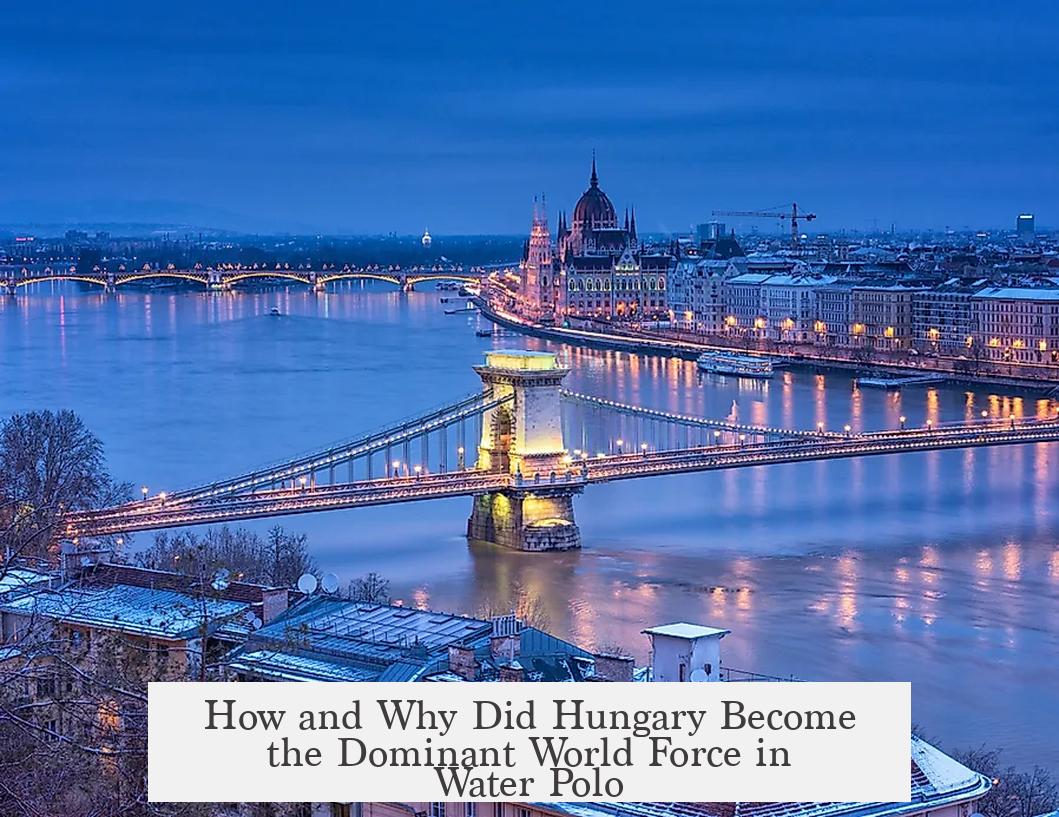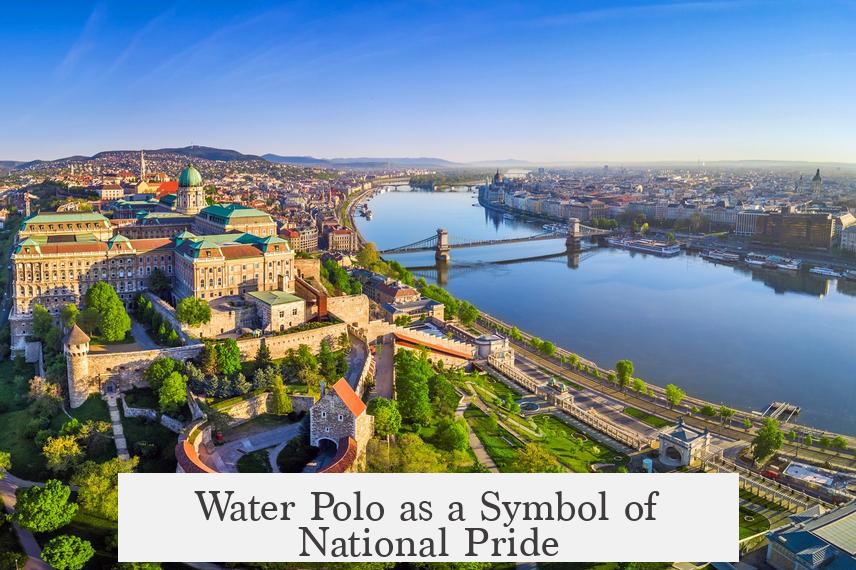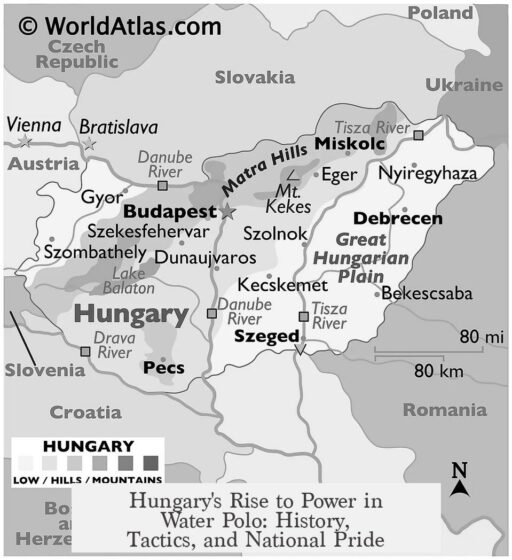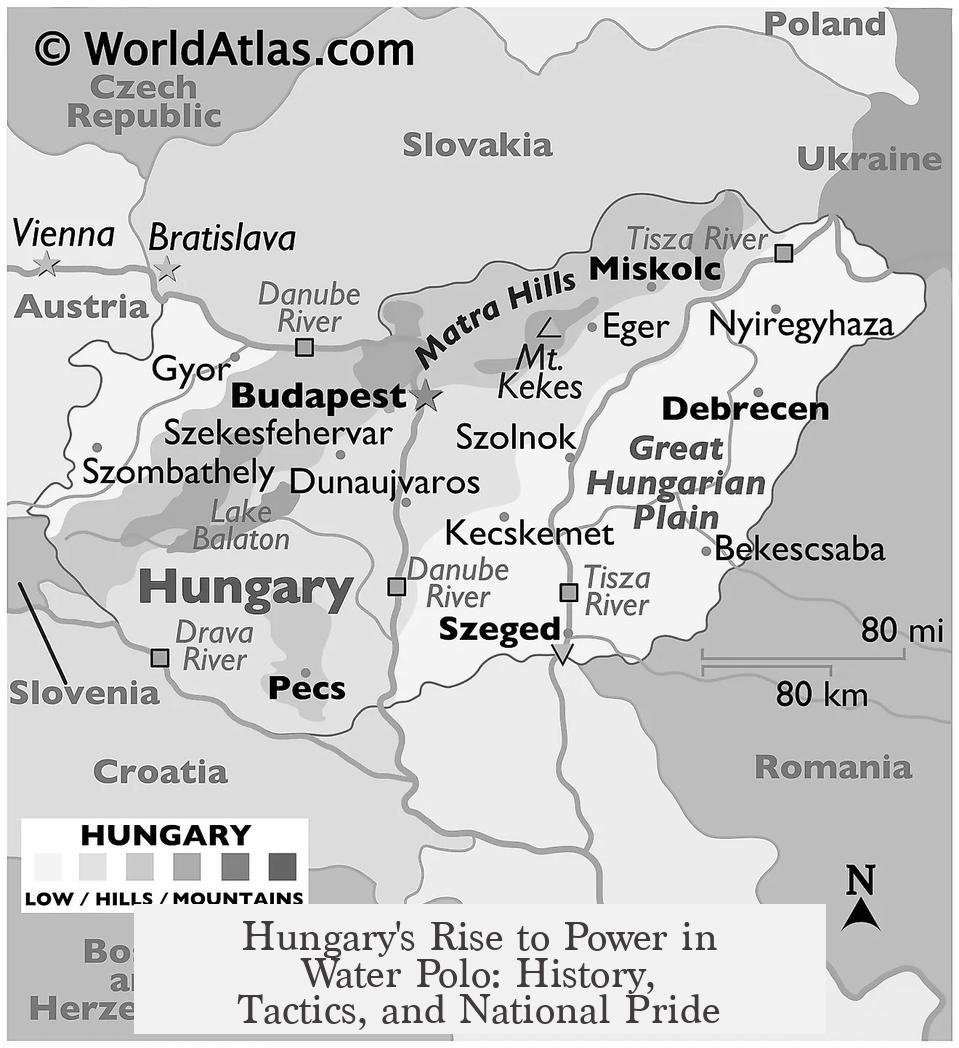Hungary becomes the dominant world force in water polo through a combination of a strong aquatic culture, early adoption of the sport, tactical innovation, and national pride linked to historic events.
The country’s natural environment plays a crucial role. Thermal waters cover about 80% of Hungary’s land, fostering a spa culture lasting over 2,000 years. In addition, Hungary’s rivers and major lakes provide ample venues for water sports. This setting nurtures a cultural affinity for aquatic activities, creating a fertile ground for water polo to thrive.
Water polo arrives in Hungary in the late 19th century. An exhibition game between England and Vienna in 1896 sparks interest, but it is Dr. Árpád Füzesséry who officially introduces the sport in 1899 with equipment and rules. Within four years, Hungary holds its first national championship, indicating rapid growth. Hungary competes in the Olympics by 1912, gradually improving performance despite early setbacks impacted by World War I.
Hungary’s reputation gains momentum after the 1914 Hungarian club FTC tour in England and a silver medal win at the 1928 Olympics. Around this period, Hungary leads tactical advancements. A Hungarian innovator introduces the ‘dry pass’ in 1928. The team popularizes the over-arm stroke along with player mobility strategies, revolutionizing how water polo is played globally, securing Hungary’s tactical edge.
The sport intersects deeply with national identity. The 1956 “Blood in the Water” match at the Melbourne Olympics is a famous symbol of Hungarian resilience during the Hungarian Revolution. Water polo emerges as a national symbol, further cementing its significance culturally and politically.
Recently, however, Hungary faces challenges. Baltic nations such as Serbia, Croatia, and Montenegro rise to dominance. Changes in rules favor different skills, and water polo’s profile declines in Hungary, contributing to reduced supremacy.
- Access to thermal waters and natural bodies of water fosters aquatic culture.
- Water polo introduction by Dr. Árpád Füzesséry sparks early growth.
- Hungary pioneers tactical innovations like the ‘dry pass’.
- Water polo symbolizes Hungarian national pride, notably post-1956 Olympics.
- Recent decline due to Baltic nations’ rise and changing game dynamics.
How and Why Did Hungary Become the Dominant World Force in Water Polo?

Hungary’s emergence as the world’s water polo powerhouse blends historical access to water, pioneering spirit in the sport, tactical innovation, and deep national pride. So, what’s the secret recipe? Let’s dive in.
Hungary isn’t your typical water polo nation. It’s a landlocked country, yet it boasts a rich aquatic heritage dating back millennia. About 80% of Hungary’s territory is laced with thermal waters, creating a culture steeped in spas and water activities. Can you imagine a nation where hot springs bubble up almost everywhere? That’s the Hungarian advantage—thermal waters have nurtured an affinity for aquatic environments for over 2,000 years.
Not only thermal waters, but Hungary is also blessed with two major rivers and a large lake, providing ample grounds for water sports. This isn’t a recent development—this affinity is woven into the fabric of Hungarian life. It sets the stage early on for water polo’s arrival and rapid growth.
The Early Days: How Water Polo Landed in Hungary
Picture this: it’s 1896, and a game of water polo is played between England and Vienna teams, captivating Hungarian eyes. By 1899, Dr. Árpád Füzesséry officially introduces the sport to Hungary with a ball and rule book in hand. Fast forward just four years, and Hungary holds its first national championship. That’s a quick uptake!
Hungarian water polo gained momentum rapidly. The team entered the Olympics in 1912 but didn’t medal immediately. World War I threw a wrench in progress—the war claimed many players. Despite this, Hungary persisted. A landmark moment arrives in 1914 when Hungarian club FTC tours England, showcasing their growing prowess. By 1928, Hungary secures an Olympic silver medal, setting a new standard for the sport. From then on, Hungary becomes synonymous with water polo dominance.
Trailblazers in Water Polo Tactics and Rules
Hungry for innovation, the Hungarians revolutionized the game. In 1928, they introduced the ‘dry pass,’ a move that changed how players interacted and passed the ball. They also popularized the over-arm stroke, making the game faster and more dynamic.
But it doesn’t stop there. Hungary championed mobility from all players in the pool, turning this into a tactical emphasis. Unlike other teams that relied on static positions, the Hungarian method promoted fluidity and motion. This clever playing style left competitors scrambling and cemented Hungary’s position as tactical leaders.
Water Polo as a Symbol of National Pride

Water polo’s deep connection with Hungarian identity is most famously embodied in the 1956 Melbourne Olympics’ “Blood in the Water” match. During this heated game, political tensions from the Hungarian Revolution spilled over into the pool. The match became a potent symbol of Hungarian resilience and defiance, forging water polo into something far beyond sport—*a national emblem.*
This game embedded water polo into the heart of Hungary’s cultural and political story. The sport rose beyond competition; it became a badge of honor. Can sports get any better than that?
The Decline and Shifts in Water Polo Supremacy
Like all dynasties, Hungary’s dominance hasn’t lasted forever. New challengers from the Baltic nations—Serbia, Croatia, and Montenegro—have emerged as recent leaders. Changes in water polo rules now favor different skill sets, subtly shifting the balance of power. Meanwhile, water polo’s popularity in Hungary has dipped, contributing to this relative decline.
So, while Hungary isn’t the unchallenged king it was in the mid-20th century, their foundational role in the sport remains undisputed. Their influence on rules, tactics, and the culture surrounding water polo is permanent.
Why Does This Matter Today?
Understanding Hungary’s rise teaches us how environment, culture, and innovation interact to create sporting greatness. It shows how a country’s landscape—thermal waters, rivers, and lakes—can nurture a unique bond with water sports. It also highlights how early adoption combined with tactical evolution can create long-lasting success. Plus, it reminds us that sports can transcend games, becoming pillars of national identity.
For fans, athletes, or coaches, Hungary’s story offers a blueprint. It encourages embracing local resources, pioneering new techniques, and intertwining sports with community pride. And for everyone, it’s a reminder that sometimes, *where you come from* shapes what you become world-famous for.
Practical Tips Inspired by Hungary’s Water Polo Success
- Leverage Nature: Use available natural resources to develop skills. Hungarians use thermal waters and lakes; what’s your equivalent?
- Innovate Constantly: Never stop experimenting with tactics and techniques. Hungary’s dry pass and over-arm stroke transformed water polo.
- Foster National Pride: Create meaning beyond the sport. Support and identity fuel passion and resilience.
- Adapt to Rule Changes: Stay flexible as the sport evolves. Hungary’s decline partly stems from slow adaptation to modern rule shifts. Learn from this!
So next time someone asks, “Why is Hungary so good at water polo?” you can explain the secret isn’t just talent—it’s a 2,000-year-old aquatic culture, early adoption, ingenious tactics, and an unbreakable bond with national pride. Isn’t that something worth cheering for?



